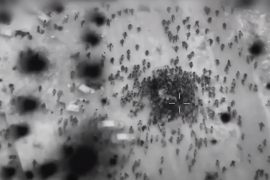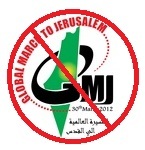Guardian contributor Raja Shehadeh is a master at deceptively using language to indict Israel, while obfuscating any and all Palestinian responsibility for the continuation of the conflict. Indeed, the headline of his recent op-ed, though likely not written by the Palestinian writer and activist, is certainly Shehadeh-worthy in its rhetorical manipulation in service of the desired narrative.

The headline was partly inspired by Shehadeh’s positive reference in his piece to Noam Chomsky, known for his academic career in linguistics, as well his support for terrorists and genocidal regimes. He quotes Chomsky as having predicted in the 1980s that increased settlement-building would bring more violence to the territories.
Shehadeh later adds, in support of Chomsky’s thesis, that “the number of people killed by Israeli forces this year stands, shockingly, at more than 100”, failing to note that many, or most, of those killed have been terrorists, or as the result of clashes between terrorists and IDF forces.
These clashes have been triggered by the actions of Palestinian extremists, insofar as the IDF has launched raids on, and have attempted to arrest, Palestinians believed responsible for attacks which have taken the lives of 20 Israelis this year, mostly civilians. Nowhere in his piece does he even acknowledge Israeli casualties of attacks by antisemitic West Bank terror groups like Hamas and Palestinian Islamic Jihad, or the obstacle such extremist groups represent to peace.
The argument in the headline and supporting text, that the settlements are the reason why “Palestinians keep dying”, is undermined in other ways as well.
First, though new homes within existing settlement boundaries continue to be constructed, there has – contrary to the headline’s claim that “Israel keeps building settlements” – only been only one new “settlement” constructed in the last twenty-five years. So, the ‘settlement footprint’ (the percentage of West Bank land taken up by settlements) has barely changed over the past several decades.
Further, most new home construction across the green line is within Israeli controlled Area C of the West Bank – most of which would remain inside of Israel in the event of peace solution with the Palestinians.
The closest the Guardian contributor comes to offering an explanation for how the settlements result in the killing of Palestinians is in the following paragraph:
A few weeks after the start of the occupation in 1967, my father, Aziz Shehadeh, submitted a plan – for which he was able to get the support of 50 prominent Palestinian leaders from different parts of the occupied territories – for the establishment of a Palestinian state alongside Israel, according to the 1947 partition borders, with its capital in the Arab section of Jerusalem. At the time there were no Jewish settlements anywhere in the West Bank, eastern Jerusalem or the Gaza Strip. The argument that he used was that unless Israel, with a population of 2.7 million, negotiated with the Palestinians, it would not be able to control the 1.2 million of them who had come under its control. He proposed that, for Israel, it was like living next to a ticking timebomb. But this failed to impress the Israeli government.
First, statements by Shehadeh’s father – who, he never mentions, was reportedly murdered by the Fatah Revolutionary Council, led by Abu Nidal – were not nearly as important as those by the belligerent Arab leaders responsible for the 1967 war, who issued the infamous 3 No’s in Khartoum: no peace with Israel, no negotiations with Israel, no recognition of Israel.
Additionally, the suggestion that the idea of a ‘land for peace’ formula, with Arab governments “failed to impress the Israeli government”, is patently false. Shehadeh’s version erases the fact that Palestinian leaders turned down Israeli peace offers – which would have created a contiguous and viable Palestinians state – on several occasions.

Let’s also remember that, since 1967, in the service of peace, Israel completely withdrew from most of the land it controlled after the war: including all of Sinai and Gaza, and large swaths of the West Bank.
Finally, after one of the occasions when a Palestinian leader turned down an extremely generous peace offer, during US-led negotiations in 2000 and 2001, the PA-led 2nd Intifada began – a five year orgy of violence that would take the lives of over 1,000 Israelis, and traumatise a generation of the state’s citizens.

Israeli leaders offered to end the conflict by exchanging settlements for peace, and Israelis kept dying.
Related Posts
Guardian repeats lie of Israeli “ethnic cleansing” in Jerusalem





The sooner the Palestinians create a genuine country called Palestine and accept peace the sooner peace will be achieved and any killing on both sides will stop. Ah yes, but the Palestinians do not want peace because they would then have to fend for themselves by not receiving massive monetry handouts from the UN and EU hundreds of millions of dollars of free money will be lost, hence the terrorism continues as does their illegitimate anti-Jewish anti-Israeli campaign.